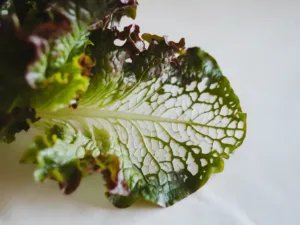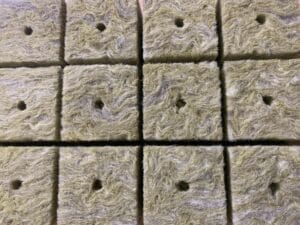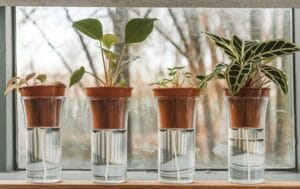Carrots are one of the most popular vegetables worldwide—and for good reason. They are crunchy, sweet, and packed with nutrients. But have you ever thought about growing them in a hydroponic system? Many assume root vegetables like carrots aren’t suitable for hydroponics, but that’s a misconception! With the right technique and a bit of know-how, you can harvest delicious, healthy carrots through water-based cultivation.
This guide will show you how to successfully cultivate carrots in a hydroponic system. From choosing the right variety to optimal lighting and the perfect nutrient solution—here’s everything you need to know to grow carrots in your own hydroponic garden.
Why Grow Carrots Hydroponically?
Growing carrots in a hydroponic system offers many advantages. First, you have control over the growing conditions, which can lead to uniform and flawless yields. This means fewer forked or deformed carrots. Additionally, hydroponics tends to have fewer pests and diseases compared to soil cultivation.
Another advantage is year-round harvesting. While carrots grown outdoors are subject to seasonal changes, in a controlled hydroponic system, you can grow and harvest continuously. This means you’ll always have fresh, crunchy carrots on hand.
Choosing the Best Carrot Varieties for Hydroponics
Not all carrot varieties are equally suited for hydroponic cultivation. When selecting, you should prefer varieties that grow small and compact. Large, long carrots like ‘Nantaise’ can be challenging to manage as they require deep substrate and ample space. Here are some of the best varieties that are well-suited for hydroponics:
| Variety | Description | Special Features |
|---|---|---|
| Paris Market | Round, small carrots with a sweet taste | Ideal for small containers, short maturity time |
| Thumbelina | Tiny, spherical carrots | Very sweet and tender, quick harvest time |
| Chantenay | Shorter, thick carrots | Robust growth, good adaptability |
| Little Finger | Slender, finger-length carrots | Ideal for tighter planting spaces |
| Mini Danvers | Compact, conical shape | Highly resistant to diseases |
These varieties are not only easy to cultivate in hydroponics but also bring a lot of flavor to the table.
The Ideal Hydroponic System for Carrots
For growing carrots hydroponically, two systems are particularly suitable: Deep Water Culture (DWC) and Nutrient Film Technique (NFT). Both offer advantages for cultivating root vegetables.
Deep Water Culture (DWC) is especially suitable as the plants hang in a nutrient solution, allowing their roots plenty of space to spread out. A deep container with enough space between plants can provide the depth carrots need to grow.
The Nutrient Film Technique (NFT) can also work well if you choose smaller carrot varieties. In this system, plants grow in a shallow channel through which a thin layer of nutrient solution constantly flows. The carrots grow along the shallow channels and have enough space to develop compact roots.
Growing: From Seed to Seedling Care
Successful carrot cultivation begins with seed germination. Choose high-quality seeds to maximize germination rates. Carrots have a slightly longer germination period, typically between 10 and 14 days.
- Seed Germination: Start by sowing carrot seeds in germination boxes or seedling cubes that are well-draining. Keep the seeds evenly moist but not wet to avoid mold formation.
- Light and Temperature: During the germination phase, seeds require a constant temperature of about 18-22°C. Use a germination box or heating mat to maintain consistent temperatures. Once seedlings are visible, they need ample light, ideally 12-16 hours a day.
- Seedling Care: When seedlings reach a height of about 5 cm and show some true leaves, they can be transferred to the hydroponic system. Be careful not to damage the young roots when placing them in the system.
The Right Substrate for Carrots in Hydroponic Systems
Choosing the right substrate is crucial for hydroponic carrot cultivation. Since carrots are root vegetables, they require a substrate that provides good aeration while offering some stability.
- Perlite: Lightweight and well-draining, perlite offers excellent air supply to the roots and retains nutrients well. Ideal for deep hydroponic systems like DWC.
- Vermiculite: Vermiculite retains moisture and nutrients very well, making it ideal for carrots that require consistent moisture.
- Coconut Coir: An eco-friendly substrate that offers good drainage and high water retention. However, it is not as stable as perlite or vermiculite.
A mix of perlite and vermiculite has proven particularly effective for carrots, providing the right balance between aeration and moisture.
Optimal Temperature and Humidity
Carrots thrive in moderate temperatures and consistent humidity. The ideal temperatures for hydroponic carrot cultivation range between 18-24°C. High temperatures can impair growth and may cause the roots to become bitter.
Humidity should be maintained between 50-70% to promote healthy growth. Excessive humidity can lead to fungal diseases, while too low humidity can stress the plants and hinder root development.
Light Requirements for Robust Carrot Growth
Proper lighting is crucial for hydroponic carrot cultivation. Carrots need about 12-16 hours of light per day to grow strong and healthy. LEDs are an excellent choice as they are energy-efficient and emit little heat.
- Light Intensity: A light intensity of about 300-400 µmol/m²/s is usually sufficient to ensure good growth.
- Light Spectrum: Full-spectrum LED lights are ideal as they provide both blue and red light necessary for root and leaf growth.
Position the lights about 30-45 cm above the plants to ensure even light distribution.
pH and EC Values: Finding the Right Balance
Carrots prefer slightly acidic conditions. A pH value between 5.8 and 6.5 is optimal. Too high or too low pH levels can impede nutrient uptake.
The electrical conductivity (EC) value should be between 1.8 and 2.4 mS/cm. A low EC value indicates a nutrient deficiency, while a high value suggests over-fertilization. Both can negatively affect carrot growth.
The Best Nutrients and Fertilizers for Hydroponic Carrots
Carrots have specific nutrient requirements to grow healthy and yield high. A balanced NPK ratio of 5-10-10 (Nitrogen-Phosphorus-Potassium) generally works well for root vegetables. Additionally, carrots need calcium, magnesium, and sulfur, as well as micronutrients like boron and manganese.
It’s important to change the nutrient solution regularly to avoid salt buildup that could damage the roots.
Harvesting: When and How to Harvest Hydroponic Carrots
Carrots are ready for harvest when they reach the desired size—typically after 70-90 days. Look for the vibrant color and firm structure of the carrot.
- Harvest Tip: Gently twist the carrots to loosen them before pulling them out. This prevents the roots from breaking or being damaged.
- Post-Harvest: Wash the carrots thoroughly and store them in a cool, dry place to maintain freshness.
Diseases and Pests: Prevention and Treatment
Although hydroponics is less prone to pests and diseases, there are still some risks you should be aware of:
- Root Rot: Caused by excessive moisture or poorly aerated nutrient solutions. Watch for brown or slimy roots.
- Aphids and Spider Mites: These small pests can be controlled through regular inspection and the use of neem oil.
Good hygiene and regular monitoring help prevent most of these problems.
Plant-Specific Tips and Advice for Hydroponic Carrot Cultivation
- Use smaller containers for compact carrot varieties to save space and better utilize resources.
- Keep the nutrient solution clean and well-aerated to promote healthy root growth.
- Regularly check the pH and EC values to ensure the carrots always receive the right nutrients.
Hydroponic carrot cultivation may initially seem challenging, but with the right knowledge and care, you can harvest crunchy and sweet carrots at home. Experiment with different varieties, substrates, and systems to get the most out of your hydroponic garden. Good luck and happy gardening!







